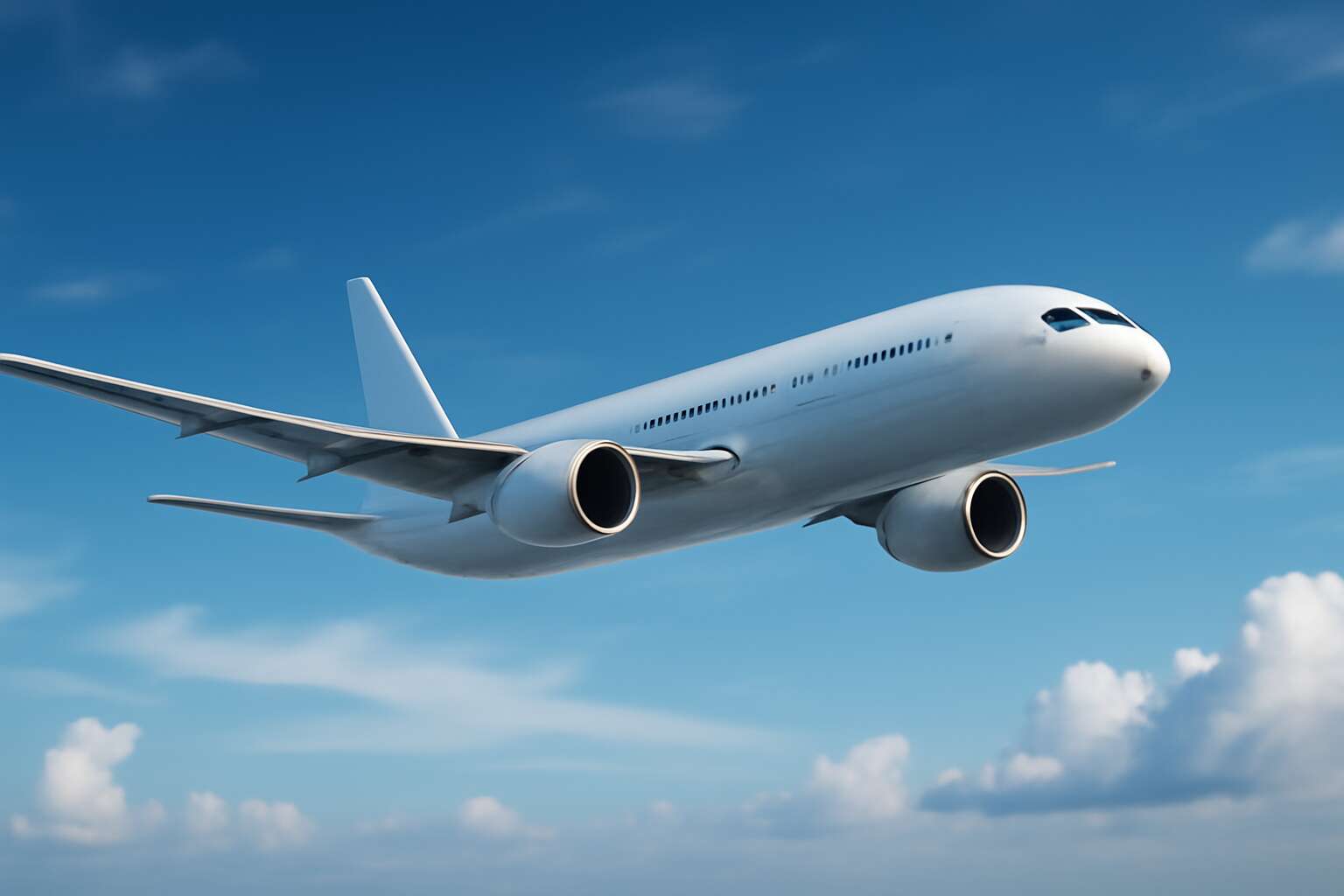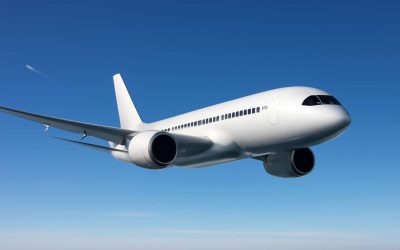The Role of Aerodynamics in Aircraft Design
Understanding Aerodynamics – How Airflow Affects Flight
When it comes to why aeroplanes are designed in a specific shape, understanding aerodynamics is crucial. The sleek, streamlined contours of an aircraft are no accident; they are the result of meticulous engineering aimed at reducing air resistance and optimizing lift. Airflow around the fuselage and wings directly impacts fuel efficiency, speed, and stability during flight.
At the heart of this design philosophy lies the principle that smooth airflow minimizes drag, allowing the plane to slice through the atmosphere with minimal effort. This is why the shape of an aircraft influences every aspect of its performance. Engineers often apply the concept of laminar flow—where air moves in parallel layers—ensuring the aircraft encounters as little turbulence as possible. This precise shaping enhances safety and efficiency, vital for commercial flights across South Africa and beyond.
In essence, the reason why aeroplanes are designed in a specific shape is to harness the natural laws of airflow. This delicate balance between form and function not only improves aeronautical performance but also transforms the way humans travel through the skies with ease and elegance. The design intricacies reflect a deep understanding of airflow and its impact on flight, making the shape of an aircraft an engineering marvel rooted in aerodynamics.
Lift Generation – The Principles of Lift and Wing Shape
When it comes to understanding why aeroplanes are designed in a specific shape, the concept of lift generation is central. The shape of an aircraft’s wings isn’t arbitrary; it’s a carefully crafted feature that harnesses fundamental principles of aerodynamics. The wing’s curvature, known as camber, plays a pivotal role in creating the pressure difference needed for lift.
By shaping wings to optimize airflow, engineers ensure that air moves faster over the top surface than underneath. This difference in pressure lifts the aircraft into the sky. The efficiency of lift depends heavily on wing design, which is why aeroplanes have a distinct and purposeful shape. It’s a delicate balance—too flat, and the lift diminishes; too curved, and drag increases.
- The wing’s shape influences the amount of lift generated.
- Proper design minimizes drag while maximizing lift efficiency.
- Innovations in wing shape continue to improve fuel economy and safety.
Ultimately, the reason why aeroplanes are designed in a specific shape is to achieve optimal lift while maintaining stability and fuel efficiency. It’s a testament to engineering that combines physics with practical needs, enabling safe and efficient air travel across South Africa and beyond.
Drag Reduction – Streamlining for Better Efficiency
In the shadowed realm of flight, where steel wings carve through the thick air like specters haunting the sky, the art of aerodynamics becomes a dark ballet of precision. The question persists—why aeroplanes are designed in a specific shape—when every curve and contour whispers secrets of efficiency and survival. The answer lies in the sinister elegance of drag reduction, a pursuit that transforms brute force into ghostly grace.
Streamlining is the silent guardian of flight, an almost alchemical process where the aircraft’s form becomes a cloaking device against the relentless drag of air. By shaping the fuselage and wings to cut through the atmosphere, engineers craft vessels that seem to glide through an abyss—faster, farther, with less resistance. This meticulous design ensures that fuel is conserved, safety is bolstered, and the journey remains a hauntingly smooth passage across the skies of South Africa and beyond.
Importance of Smooth Contours – Minimizing Air Resistance
In the intricate dance of flight, the importance of smooth contours cannot be overstated. Every line and curve of an aircraft is a carefully considered decision—an effort to minimize air resistance and maximize efficiency. The question of why aeroplanes are designed in a specific shape goes beyond mere aesthetics; it is rooted in the fundamental physics of aerodynamics. When an aircraft’s form resembles a sleek, elongated silhouette, it encounters less drag, allowing it to slice through the atmosphere with ghostly ease.
This meticulous shaping serves a vital purpose. Reduced air resistance not only conserves fuel but also enhances safety and performance. Engineers employ principles of fluid dynamics to craft aircraft that seem to defy the chaos of the sky. In doing so, they transform brute force into graceful motion, turning the complex realm of air into a domain where precision guides every contour and curve.
Influence of Shape on Flight Performance
Fuel Efficiency – Designs That Maximize Range and Minimize Fuel Consumption
When it comes to why aeroplanes are designed in a specific shape, the goal is simple: maximize flight performance while keeping fuel bills at a manageable level. A sleek, streamlined form isn’t just about looking fast—though let’s admit, they do have a certain aerodynamic swagger. The shape influences how efficiently the aircraft slices through the air, directly impacting fuel efficiency and range. Think of it as a high-tech bird with a carefully sculpted body that minimizes drag (that stubborn air resistance we’ve all come to hate!).
By tailoring the shape of an aircraft, engineers can enhance fuel efficiency—literally stretching the distance a plane can fly on a gallon of jet fuel. For example, the fuselage and wing design are optimized to reduce turbulence and air resistance. This isn’t just about saving money; it’s also about reducing the environmental footprint of each flight. Here are some key design elements that make all the difference:
- Wing span and shape—longer wings with a gentle curve offer better lift-to-drag ratios.
- Fuselage contour—smooth, tapered bodies glide through the air with less resistance.
- Engine placement—mounted to optimize airflow and balance, cutting down on unnecessary turbulence.
In the end, understanding why aeroplanes are designed in a specific shape reveals a fascinating blend of physics, engineering ingenuity, and a dash of aesthetic finesse—all working together to get us from Johannesburg to Cape Town faster, farther, and greener than ever before!
Speed and Altitude – How Shape Affects Maximal Performance
When it comes to why aeroplanes are designed in a specific shape, the goal is to push the boundaries of speed and altitude—without burning through your fuel budget faster than a cheetah chasing its prey. The shape of an aircraft directly influences its maximal performance, especially in terms of how fast it can fly and how high it can go. A sleek, pointed nose and elongated fuselage aren’t just about looking like a futuristic bird; they serve a critical purpose in slicing through the air with minimal resistance.
For instance, aircraft with optimized wing shapes and streamlined bodies can reach cruising speeds that leave less room for turbulence and drag, allowing pilots to conquer higher altitudes with ease. This is because the aerodynamic profile influences how efficiently the plane can generate lift at higher speeds and maintain stability at soaring heights. In fact, the specific contours of an aircraft’s shape are meticulously crafted to maximize performance in these areas.
- Enhanced speed capabilities
- Higher operational altitudes
- Reduced fuel consumption at maximum performance
All of these factors come together thanks to carefully engineered design choices—why aeroplanes are designed in a specific shape isn’t just about aesthetics; it’s about unleashing the full potential of flight while keeping efficiency front and centre. It’s a high-stakes balancing act that combines science, art, and a touch of engineering wizardry to get you across the sky faster, higher, and greener than ever before.
Maneuverability and Stability – Ensuring Safe and Responsive Flight Dynamics
The shape of an aircraft isn’t just about aesthetics; it’s a finely tuned instrument of flight performance. When considering why aeroplanes are designed in a specific shape, the focus is on ensuring optimal maneuverability and stability—crucial for safe, responsive flight. A sleek, aerodynamic form allows pilots to navigate complex air currents with agility, turning sharp corners or adjusting altitude with confidence.
Furthermore, the contours and overall design influence how the aircraft responds to control inputs, making the difference between a smooth glide and a jittery ride. For instance, certain wing shapes and fuselage profiles enhance stability during turbulent conditions, providing a steady hand in the cockpit even amidst unpredictable skies. This meticulous design process unites science and artistry, resulting in aircraft that are both resilient and remarkably agile.
- Enhanced maneuverability ensures quick responses to pilot commands, vital during takeoff, landing, or emergency situations.
- Optimized stability minimizes unwanted vibrations or oscillations, contributing to passenger comfort and safety.
- Refined aerodynamic features help the aircraft maintain control at various speeds and altitudes, echoing the seamless dance of a bird in flight.
Material and Structural Considerations
Lightweight Construction – Materials That Support Aerodynamic Shapes
Material and structural considerations are fundamental to why aeroplanes are designed in a specific shape. Modern aircraft leverage lightweight construction techniques that maximize strength while minimizing weight, ensuring optimal performance and fuel efficiency. The choice of materials—such as aluminium alloys, composites, and advanced polymers—supports the aerodynamic shapes that cut through the air with minimal resistance.
These materials are carefully selected not only for their durability but also for their ability to support the stresses imposed during flight. Lightweight construction is achieved through innovative manufacturing processes that embed strength into every curve and contour of the aircraft. This meticulous engineering allows aeroplanes to maintain their sleek, efficient forms, which are crucial for achieving high speeds and fuel economy.
Some of the most advanced materials used in aircraft construction include:
- Carbon fibre composites
- Aluminium alloys
- Advanced thermoplastics
By supporting the aerodynamic shapes that reduce drag and enhance lift, these materials exemplify the intricate balance between form and function—an essential reason why aeroplanes are designed in a specific shape that optimizes both performance and safety.
Structural Integrity – Designs That Balance Shape and Durability
Structural integrity is the backbone of every aircraft design, ensuring that the sleek shapes we admire can withstand the relentless forces of flight. When engineers ask why aeroplanes are designed in a specific shape, they are balancing a delicate interplay between form and durability. It’s not just about looking streamlined—each curve and contour is meticulously crafted to support high stress loads without compromising safety.
To achieve this, designers incorporate advanced materials such as carbon fibre composites and aluminium alloys, which provide both strength and flexibility. These materials enable the aircraft to endure turbulence, pressure differences, and rapid maneuvers. The integration of these elements results in an aircraft that maintains its aerodynamic profile while offering resilient structural integrity.
- Optimized load distribution
- Enhanced fatigue resistance
- Improved crashworthiness
By thoughtfully considering these factors, aerospace engineers craft aircraft that are not only fast and fuel-efficient but also able to withstand the rigors of extreme conditions. It is this intricate dance of shape and durability that truly defines why aeroplanes are designed in a specific shape—an enduring testament to engineering mastery and safety excellence!
Safety and Regulatory Standards
Compliance with Aviation Regulations – Design Requirements for Safety
Behind every sleek, soaring aircraft lies a meticulous commitment to safety and strict adherence to regulatory standards. The question of why aeroplanes are designed in a specific shape goes beyond aesthetics—it’s about construction that meets rigorous safety requirements enforced by aviation authorities worldwide. Every contour and curve is scrutinized to ensure structural integrity under extreme conditions, from turbulent storms to high-altitude pressures.
Design requirements for safety demand that aircraft meet comprehensive aviation regulations, which include mandatory inspections, material specifications, and fail-safe systems. These standards are in place to protect both passengers and crew, making the shape of the aircraft more than just aerodynamic; it’s a shield against unpredictable elements and mechanical failures. In essence, the specific shape of an airplane is a direct response to these safety imperatives, balancing innovation with uncompromising security protocols.
Impact of Shape on Emergency Situations – Designs Supporting Rapid Evacuations
The shape of an airplane isn’t just about cutting through the sky with grace; it plays a crucial role in emergency situations, especially when rapid evacuations are needed. When every second counts, the design must support swift, safe egress for all passengers. The fuselage’s streamlined form allows for quick opening of emergency exits and easy movement through the cabin, reducing chaos during critical moments.
Why aeroplanes are designed in a specific shape? It’s fundamentally about safety and efficiency. The aircraft’s contours are crafted to facilitate not only aerodynamic performance but also to support emergency protocols. For example, the smooth, continuous lines help minimize turbulence around exits, enabling passengers to evacuate faster. Additionally, the spacious cabin design complements these shapes, ensuring that escape routes are accessible and unobstructed.
Supporting rapid evacuations involves careful planning and innovative design features, such as strategically placed doors and reinforced structures. These elements are integrated seamlessly into the aircraft’s form, exemplifying how the shape directly impacts safety in unpredictable scenarios. The specific shape of an airplane is, therefore, a vital aspect of its safety architecture—balancing the need for aerodynamic performance with the imperative of protecting lives during emergencies.
Evolution of Aircraft Shapes
Historical Perspective – From Early Designs to Modern Jets
The evolution of aircraft shapes tells a fascinating story of innovation driven by necessity. In the earliest days of flight, designs were crude, often inspired by birds or simple box-like structures. Over time, engineers learned that shape significantly impacts performance. The shift from boxy biplanes to sleek, streamlined jets marked a turning point. Modern aircraft are a marvel of aerodynamic engineering, crafted to reduce drag and maximize efficiency. This pursuit of optimal design is why aeroplanes are designed in a specific shape—each contour and curve serves a purpose. From the elongated fuselage to swept-back wings, every element plays a role in balancing speed, stability, and fuel economy. The continuous refinement of aircraft shapes underscores the relentless quest to push the boundaries of flight, making air travel safer, faster, and more efficient than ever before. The evolution from early prototypes to today’s advanced jets exemplifies how form and function intertwine in aerospace design. |
Technological Advances – Innovations in Aerodynamic Design
The evolution of aircraft shapes reflects a relentless pursuit of perfection—an intricate dance between form and function that pushes the boundaries of human ingenuity. As technological advances continue to redefine possibilities, innovations in aerodynamic design have become the cornerstone of modern aviation. These breakthroughs are not happenstance but deliberate choices rooted in a profound understanding of airflow dynamics and material science.
In the quest to optimize performance, engineers have developed streamlined forms that cut through the air with minimal resistance. This pursuit has led to the adoption of swept-back wings and elongated fuselages—each element meticulously crafted to enhance speed, stability, and fuel economy. The design process often involves:
- Utilizing advanced computational fluid dynamics (CFD) simulations
- Implementing lightweight yet durable materials
- Refining contours to reduce drag and improve lift
Why aeroplanes are designed in a specific shape is a question rooted in the very essence of flight itself—balancing the delicate interplay of aerodynamics, safety, and efficiency. Every curve and angle embodies a calculated compromise, echoing the deeper human desire to transcend limitations and reach for the horizon. Through this lens, aircraft shape becomes more than mere aesthetics; it is a testament to our unyielding drive to understand and master the skies.
Future Trends – Emerging Shapes and Materials
As aviation technology soars into the future, the shapes of aircraft continue to evolve with a poetic precision, driven by the relentless pursuit of aerodynamic excellence. The emerging trends in aircraft design reveal a fascinating tapestry of innovation—where materials like composites and advanced alloys are reshaping what is possible. These new materials enable sleeker, more agile forms that push the boundaries of speed and efficiency.
One compelling reason why aeroplanes are designed in a specific shape is to harness the potential of cutting-edge aerodynamics. Future trends include the development of blended wing bodies and morphing aircraft that adapt their contours mid-flight, optimizing lift and reducing drag. Such designs promise to revolutionize fuel efficiency and environmental sustainability.
- Enhanced lightweight materials that support complex, curvilinear forms
- Innovative aerodynamic shapes that maximize lift while minimizing resistance
- Adaptive structures capable of altering shape for optimal performance in varying flight conditions
In this dance of form and function, the future of aircraft design embodies a synthesis of artistry and science—poised to elevate humanity’s reach across the skies with grace, speed, and resilience. Every new shape is a testament to our unyielding quest to unlock the infinite potential of flight.




0 Comments